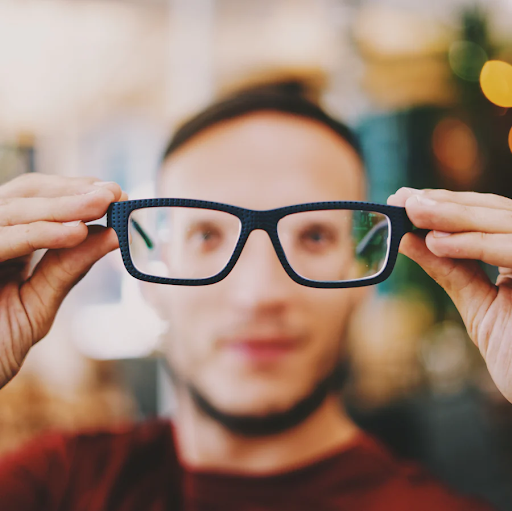12 Reasons Why You Have Blurry Vision – #9 Will Surprise You!

Experiencing blurry vision can be unsettling and distressing. It could hit you at any time. You’re reading your favorite book, enjoying the scenery on a leisurely stroll, or focusing intently on your computer screen, when suddenly, you notice that it isn’t as crystal clear as it could be. What does blurry vision look like? It depends. Objects lose their sharpness, outlines blur into indistinct shapes, and even familiar faces seem shrouded in a hazy fog.
What makes blurry vision particularly unpleasant is that it could manifest itself in different ways. It could be a fleeting inconvenience that comes and goes. Alternatively, it may persist stubbornly. In some cases, it may stick around for a period of time before disappearing again.
But truth be told, regardless of how it appears, it is more than just a nuisance; it’s often a symptom of underlying health issues that demand attention. While it’s tempting to dismiss it as a passing inconvenience or attribute it to fatigue or eye strain, doing so can be a grave mistake. That being said, blurry vision could be many things. Here are the top 12 most common causes of blurred vision and what they mean.
#1. Refractive errors
What are refractive errors? Essentially, these tend to be nearsightedness, farsightedness, and astigmatism. They are common vision problems that occur when the eye fails to properly bend light to focus it on the retina. While these conditions can affect individuals of all ages, they often manifest during childhood or adolescence and may worsen over time.
Regular eye exams with an eye doctor, especially for children and young adults, can help diagnose refractive errors early. Treatments typically include corrective lenses, such as glasses or contact lenses, which compensate for the irregularities in the eye’s shape and restore clear vision. Refractive surgery, like LASIK, may offer a more permanent solution.
#2. Presbyopia
Presbyopia is a common age-related condition and affects individuals over the age of 40. It is caused by the natural aging process of the eye’s lens. As the lens loses its flexibility, it becomes more challenging to focus on nearby objects, leading to blurred vision, particularly when reading or performing close-up tasks.
While presbyopia is a natural part of aging, certain factors, such as a family history of the condition or existing refractive errors, may increase the likelihood of developing it earlier or experiencing more severe symptoms.
Diagnosing presbyopia typically involves a comprehensive eye exam, including a visual acuity test and an assessment of near vision. Treatments may include reading glasses, bifocals, or progressive lenses, which help compensate for the eye’s diminished ability to focus up close. Additionally, refractive surgery options like monovision LASIK may provide alternative solutions for individuals seeking long-term vision correction.
#3. Cataracts
Cataracts are characterized by the clouding of the eye’s natural lens. They primarily affect older adults, typically those over 60. However, certain risk factors, such as prolonged exposure to ultraviolet radiation, smoking, diabetes, or a family history of cataracts, may increase susceptibility at an earlier age.
Diagnosis often involves a comprehensive eye exam, including tonometry to measure intraocular pressure, and a slit-lamp examination to evaluate the lens’s clarity. Treatments for cataracts vary depending on the severity of symptoms but may include surgical removal of the clouded lens followed by implantation of an artificial intraocular lens.
#4. Glaucoma
You migh thave heard of glaucoma, a condition linked to damage to the optic nerve. Glaucoma is often associated with elevated intraocular pressure. While anyone can develop glaucoma, in the US, individuals of African or Hispanic ancestry, and those with medical conditions like diabetes or hypertension,are more at risk. When left untreated it can lead to permanent vision loss.
How can you diagnose the condition? Diagnosis is typically done with an optometrist. Treatments aim to reduce intraocular pressure and prevent further damage to the optic nerve. There are different options available, such as medicated eye drops, oral medications, laser therapy, or surgical procedures like trabeculectomy or drainage implants.
Early detection and ongoing management are crucial for preserving vision.
#5. Migraines
Stress-induced migraines, often preceded by visual disturbances known as auras, affect individuals prone to migraines and are triggered by stress. Those with a family history of migraines or underlying anxiety disorders may be more susceptible. Diagnosis involves evaluating symptoms and medical history, ruling out other potential causes, and possibly conducting neurological exams or imaging tests.
Treatment strategies may include stress management techniques, lifestyle modifications, and medications to alleviate symptoms or prevent migraines. Additionally, many find that tackling the underlying stressors or seeking therapy can help reduce the frequency and severity of stress-induced migraines for better overall quality of life.
#6. Low blood sugar
Low blood sugar, or hypoglycemia, is commonly associated with diabetes but can also occur in individuals without the condition, particularly those on certain medications or with hormonal imbalances. Diabetics, especially those using insulin or certain oral medications, are more prone to hypoglycemia due to fluctuations in blood sugar levels. Bear in mind that in the long term, if low blood sugar is linked to diabetes, there may be other risks to your eye health.
Diagnosis typically involves monitoring blood glucose levels with a glucometer and recognizing symptoms such as blurred vision, confusion, sweating, and dizziness. Thankfully, you can easily treat low blood sugar by consuming fast-acting carbohydrates like glucose tablets or juice to raise blood sugar levels quickly.
#7. Dry eye syndrome
Dry eye syndrome occurs when the eyes fail to produce an adequate amount of tears or when tears evaporate too quickly, resulting in discomfort and vision disturbances. This is a fairly common issue among adults in the US. Individuals more prone to developing dry eye include older adults, women (especially during hormonal changes like menopause), those with certain medical conditions like autoimmune diseases, and individuals who spend long hours in front of screens or in dry environments.
Here again, this is easy to treat. You may need artificial tear drops or prescription medications.
#8. Eye infections
Eye infections, caused by bacteria, viruses, or fungi, can affect individuals of all ages but are more common in those with weakened immune systems, poor hygiene habits, or frequent contact lens wearers.
Exposure to contaminated water or surfaces, trauma to the eye, or sharing personal items can increase the risk of infection.
Depending on the type and severity of infection and you may need antibiotic, antiviral, or antifungal medications, as well as supportive measures like warm compresses or eye drops.
#9. Pre-eclampsia
High blood pressure in pregnant women, known as pre-eclampsia, is a serious condition that typically arises after 20 weeks of pregnancy, although it can occur earlier. Women with a history of high blood pressure, obesity, diabetes, or kidney disease are at higher risk. Pre-eclampsia is also more common in first pregnancies or with multiple pregnancies (e.g., twins).
Typically, this will be picked up during prenatal visits. There are different treatment options available, including medication to lower blood pressure, bed rest, and close monitoring of both the mother and baby. In severe cases, your doctor may recommend early delivery to avoid further complications for both the mother and the baby.
#10. Medications
Did you know that certain medications can cause blurry vision as a side effect? Individuals with pre-existing eye conditions or sensitivity to certain medications may be more susceptible.
Which medications should you be wary of? Medications like antihistamines, antidepressants, corticosteroids, and some blood pressure medications are known to potentially cause blurry vision. Bear in mind that this is not a common issue, but it can still happen.
Your doctor can help adjust the dosage or switch to alternative medications with fewer visual side effects.
#11. Uveitis
Uveitis, inflammation of the uvea, may affect individuals of any age but is more common in adults aged 20 to 50. Certain factors, such as autoimmune diseases like rheumatoid arthritis or inflammatory bowel disease, infections, or trauma to the eye, may increase susceptibility.
Here, doctors will diagnose uveitis during an eye examination. This will include testing your vision but also examining the eye’s interior with specialized instruments. You may also need to take blood tests or imaging tests to determine the underlying cause.
Thankfully, uveitis can be easy to treat if it is detected early. Mild cases can be managed with corticosteroid eye drops, oral medications, or immunosuppressive therapy to reduce inflammation and alleviate symptoms.
#12. Eye fatigue
Eye fatigue, characterized by discomfort, strain, and blurred vision after prolonged visual tasks, can affect anyone but is more common in individuals who spend extended periods reading, using digital screens, or performing close-up work. You are probably familiar with the rule of 20 for screens. Every 20 minutes, you need to look at something 20 feet away for 20 seconds.
What can cause eye fatigue? Poor lighting, improper viewing distance, or uncorrected vision problems may exacerbate symptoms.
Typically, this is a condition that is easily manageable. Treatment options include taking regular breaks, adjusting lighting and screen settings, using lubricating eye drops, or using screen glasses.
In conclusion, blurry vision may not necessarily mean that you need to buy glasses. There could be a variety of reasons why your vision is blurry. So, as tempting as it is to try to sort it out yourself with over-the-counter glasses, remember to look after your health and get it checked. Stay happy, stay healthy.





